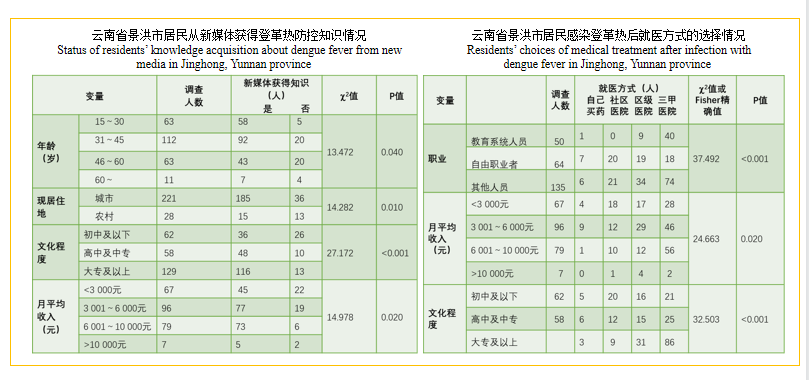Insecticide Resistance Surveillance Special
ZHAO Chun-chun, ZHU Cai-ying, JIA Qing-chen, YAN Dong-ming, LIU Guo-jun, WU Hai-xia, SONG Xiu-ping, LIU Qi-yong, WANG Jun, MENG Feng-xia
Objective To investigate the levels and distribution of resistance of Aedes albopictus to several commonly used insecticides in different areas of China, and to provide guidance for the resistance control and use of insecticides in China. Methods Excel 2016 software was used to collect and organize the bioassay data on the resistance of larval and adult Ae. albopictus to pyrethroids, carbamates, and organophosphorus insecticides in China from 2017 to 2018, and the level of resistance was statistically analyzed. ArcGIS 10.3 software was used to draw the resistance map of different insecticides. Results By collecting monitoring data in 2017 and 2018 and reviewing the relevant literature, we obtained the bioassay data on the resistance of Ae. albopictus to commonly used insecticides in 15 provinces, and then analyzed the data on the resistance to pyrethroids (deltamethrin, permethrin, and beta-cypermethrin), carbamates (propoxur), and organophosphates (malathion, temephos, and DDVP). Aedes albopictus larvae developed medium and high resistance to deltamethrin, permethrin, and beta-cypermethrin at 34 (85.00%), 18 (75.00%), and 33 (78.57%) monitoring sites, respectively, and the adult mosquitoes developed resistance or high resistance to deltamethrin, permethrin, and beta-cypermethrin at 34 (61.82%), 8 (34.78%), and 11 (34.38%) monitoring sites, respectively. Aedes albopictus larvae developed medium and high resistance to propoxur and temephos at 5 (27.78%) and 14 (36.84%) monitoring sites, respectively, and the adult mosquitoes developed resistance to propoxur and temephos at 7 (20.59%) and 4 (14.29%) monitoring sites, respectively. Conclusion Both adult and larval Ae. albopictus in most areas of China, especially coastal areas such as Guangdong and Fujian provinces, has developed high levels of resistance to pyrethroid insecticides; the resistance levels of carbamates and organophosphorus insecticides are relatively low. Local use of insecticides should be guided based on local conditions and the monitoring results; high-resistance insecticides should be stopped for a period of time, and the insecticides to which Ae. albopictus has developed medium and low resistance or suspected resistance should be used alternately or in combination.

